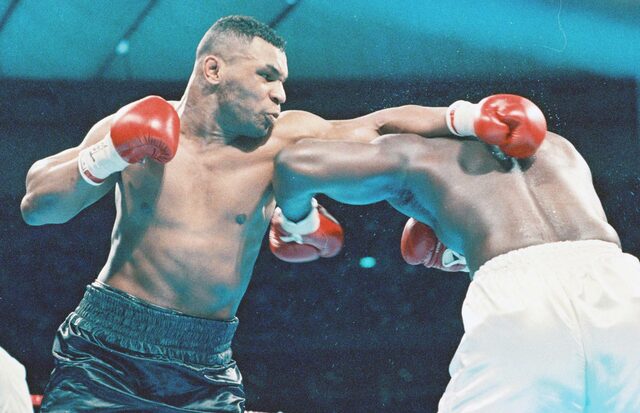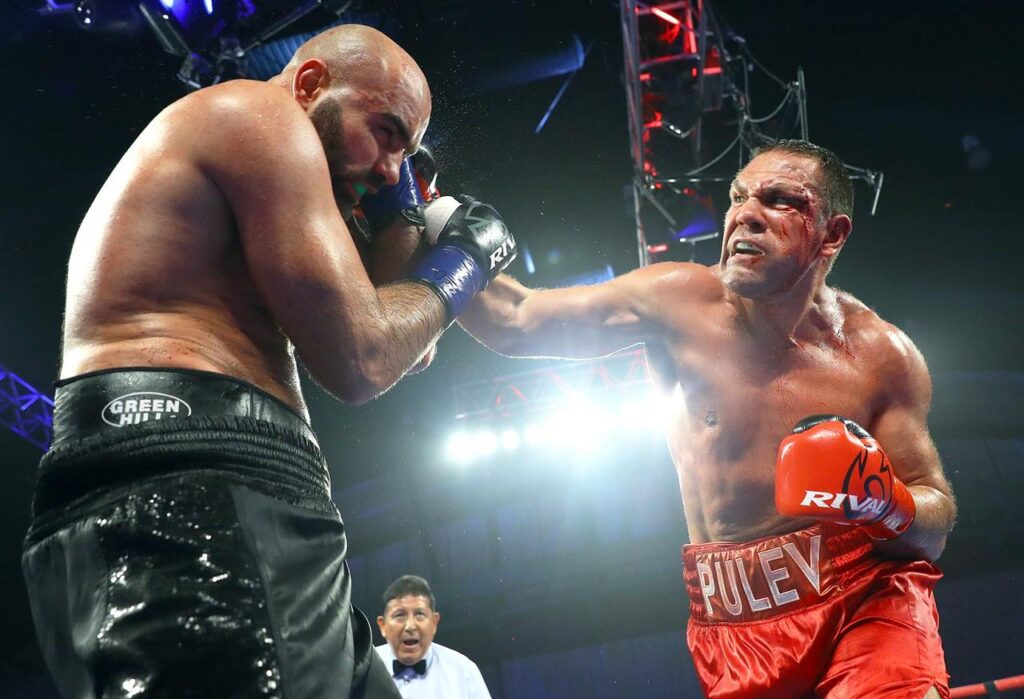
Boxing is a sport of skill and strategy, with a wide variety of striking and defensive techniques.
These techniques are important in determining the flow of the match and paving the way to victory.
This article provides a comprehensive explanation of the basic to advanced techniques used in boxing, and provides a detailed introduction to the characteristics of each technique and how to use them in actual combat.
From beginners to experienced players, we aim to provide a comprehensive understanding of boxing techniques and provide practical content.
Learn how to effectively use and combine each technique to improve your performance in training and matches.
目次
Basic techniques of boxing
Basic techniques in boxing are an important element that determines the success or failure of a match.
Here we will explain in detail the four basic striking techniques: jab, straight, hook, and uppercut.
These techniques are the foundation of boxing, and when used effectively can break down defenses and create opportunities for attack.
Jab: The basics of basics
The jab is the most basic and important striking technique in boxing techniques.
This is a fast, long-reach, straight-line punch used to penetrate the opponent’s defense.
The jab is used for multiple purposes, such as gauging the distance between you and your opponent, setting up an attack, and breaking down your defense, and can also be used in succession to put pressure on your opponent.
Mastering an effective jab is one of the top priorities in improving your boxing technique.
Straight: the source of power
A straight punch is a straight punch similar to a jab, but it is delivered with more power.
This punch draws power primarily from the back leg and is delivered using weight shift.
A straight is a powerful blow that breaks through defense, and is often used as a punch that directly leads to a KO.
Therefore, accuracy and timing are extremely important.
Hook: attack from the side
A hook is a horizontal, arcing punch aimed at the opponent’s side or chin.
This technique is suitable for hitting gaps in the opponent’s guard, and can be a very powerful KO punch.
The angle of bending of the arm and the speed of rotation are the keys to a successful hook.
Uppercut: Technique to break through defense
An uppercut is a powerful punch launched from below to above, and is effective when the opponent’s guard is stiff.
Especially when your opponent has a low guard, you can inflict great damage by aiming at the jaw or trunk.
Effective use of an uppercut can deliver an unexpected blow to your opponent and has the potential to change the course of a match.
These basic techniques are essential for effective attack and defense in boxing.
Understanding the characteristics of each technique and using them in the appropriate situations is the key to success in a match.

Types of defense techniques
In boxing, success in a match depends not only on good attacking technique, but also on effective defensive technique.
Here, we will explain in detail the three basic defensive techniques: block, slip, and roll.
By mastering these techniques, you can skillfully avoid your opponent’s attacks and increase your chances of countering.
Block: Basic action to prevent attacks
Blocking is one of the most basic defensive techniques in boxing.
This technique refers to the action of using your hands to directly stop your opponent’s punch.
To perform an effective block, keep your arm in the proper position and use the strength of your wrist and arm to absorb the impact of the punch.
Blocks can prevent direct blows to the face and body and minimize damage.
In particular, it is common to defend against attacks to the head by keeping your hands high and covering your body with your elbows.
Slip: Defense by evasion
A slip is a technique in which you move your body slightly to avoid an opponent’s punch.
This movement is primarily done by moving the head from side to side, guiding the opponent’s punch into the air.
Timing is very important in slips, and you need to react precisely at the moment your opponent’s punch is thrown.
If successful, it will easily throw your opponent off balance, creating a perfect opportunity for a counter attack.
Roll: Evasion technique using the lower body
A roll is an evasive movement that uses the entire body, and is especially effective against hooks and attacks from the side.
In this technique, you bend your knees slightly while moving your body significantly back and forth or side to side to get out of your opponent’s attack range.
When performing a roll, it is important to transfer your weight appropriately, and you must always maintain a counter-conscious posture even during the movement.
These defensive techniques are essential for long-term and safe competition in boxing.
Appropriately using each technique depending on the situation is the key to increasing your defense power in a match and building a bridge to attack.

footwork and positioning
In boxing, footwork is an extremely important element in not only determining the effectiveness of strikes and defense, but also controlling the flow of the match.
Good footwork is fundamental to gaining an advantage on offense and ensuring safety when defending.
Basic footwork and positioning techniques are explained below.
Basic steps: forward/backward
The most basic footwork in boxing is forward and backward movement.
These movements are used to adjust the distance to your opponent and maintain an appropriate position.
When moving forward, put your front foot out first and drag your back foot to close the distance.
When backing up, reverse this motion, lowering your back leg first and pulling your front leg closer together.
This allows you to adjust your position while maintaining your balance.
This simple yet effective footwork is the foundation of attack and defense.
Side step: left and right movement
Side step is a technique that allows you to move quickly from side to side to get out of the opponent’s attack line.
This movement is particularly effective in avoiding the opponent’s linear attacks and can create opportunities for counterattacks.
When performing a side step, place your weight-bearing foot firmly on the ground and change direction with your other foot.
By performing this action quickly, you can toy with your opponent and find opportunities to attack.
Angling: Tactics to change angles
Angling is the technique of subtly changing your position to change the angle of attack and take an advantageous position against your opponent.
This movement allows for effective attacks that attack gaps in the opponent’s guard by changing position to the side or diagonally without directly receiving the opponent’s attack.
Angling changes the angle of attack by stepping out wide and rotating the body.
This allows you to attack from directions that are difficult for your opponent to react to, and makes it easier to defend.
By mastering these footwork and positioning techniques, boxers can establish superiority in the ring and advance the fight in their favor.
Effective footwork is a key element that is valuable not only in offensive movements, but also in defensive situations, ultimately leading to victory.

combination technique
Combination techniques in boxing are an important element in gaining an advantage in a match.
These techniques allow you to combine different punches to break through your opponent’s defenses and effectively deal damage.
In particular, the combination of jab and straight and hook and uppercut are basic combinations often used by boxers.
Cooperation between jab and straight
The combination of jab and straight is one of the most basic and effective combinations in boxing.
With this combination, you can use a jab to draw the opponent’s attention and close the distance, followed by a straight shot to deliver a powerful blow.
A jab is a relatively light blow that is used to break down the opponent’s guard or force them to adjust their position, and then use this opportunity to inflict decisive damage with a straight shot.
This combination requires speed and precision, and with practice you can create the flow naturally.
combination of hook and uppercut
The combination of hook and uppercut is especially effective when the opponent’s defense is set tightly.
A hook is a side attack aimed at the opponent’s side, and an uppercut is launched from the bottom to the top, allowing you to penetrate gaps in the opponent’s defense.
This technique uses a hook to pull the opponent’s guard to the side and uses the recoil to deliver a powerful blow to the midsection with an uppercut, increasing the possibility of KOing the opponent.
Mastering the timing and power distribution of the punch is essential for this combination to be successful.
These combination techniques are an important part of boxing training and require technical precision and strategic thinking.
By mastering effective combinations, you will have a variety of attack options during a match and can give your opponent an overwhelming advantage.

How to do counter techniques
Counter moves are a very effective means of counterattack in boxing.
These techniques focus on taking advantage of your opponent’s attacks and striking quickly and effectively into the open gaps.
In particular, counter jabs and counter hooks are important techniques to outwit your opponent.
counter jab timing
A counter jab is a jab that quickly counterattacks during or immediately after the opponent’s attack movement.
The success of this technique depends on timing. The ideal counter jab timing is when your opponent launches an attack, especially when your opponent shifts his center of gravity forward.
The key is to wait for the moment when your opponent’s punch misses and then quickly deliver a jab before the opponent’s hand returns.
This technique takes advantage of the opponent’s temporary loss of balance and targets the part where the opponent’s defense is weak.
How to effectively use counter hooks
A counter hook is a technique in which you dodge your opponent’s attack while delivering a powerful hook.
In order to use this technique effectively, it is important to first read your opponent’s attack pattern.
Generally speaking, when your opponent throws a straight or jab, it’s common to slip or parry the attack and then quickly throw a hook from the other side.
When releasing a counter hook, you can inflict more damage on your opponent by shifting your weight appropriately and placing all of your weight on the hook.
Mastering counter techniques will help you develop a psychological advantage over your opponent in a boxing match.
By learning these techniques, you will be able to turn your opponent’s attacks into your own opportunities, and become a fighter with tactical versatility and quick reaction times.

Clinching technique
Clinching is a tactic used in boxing to get in close contact with your opponent during close combat.
This technique is used especially to interrupt an opponent’s attack or to regain one’s pace.
Clinching is a technique that requires more than just holding the opponent, it requires strategic positioning and use of force.
clinch basics
The basic idea of a clinch is to close the distance with your opponent and limit their movement.
The correct way to clinch starts by firmly grabbing your opponent’s shoulders and arms while getting within their attack range.
After grabbing the opponent, place your body close to the opponent and restrict their movements.
At this time, keep your feet firmly planted on the ground, maintain balance, and try to pull the weight of your opponent towards you.
During a clinch, it is important to always anticipate your opponent’s next move and keep your head out of their striking range.
How to attack from the clinch
Attacks from the clinch require a different approach than regular punches because the distance between you and your opponent is very close.
When attacking from the clinch, short uppercuts and body shots are most effective.
These attacks can damage the opponent’s ribs and abdomen, and reduce the opponent’s physical strength.
When attacking, keep your elbows low and use small, quick movements to strike powerfully.
Also, when leaving the clinch, one strategy is to take advantage of your opponent’s recoil and quickly distance yourself, then aim for a counter with a jab or straight.
Clinching is more than just a hug, it’s an important technique for disrupting your opponent’s pace and securing an advantageous position for yourself.
Mastering this technique will make it easier to control the flow of the match and create advantageous situations.

Applied techniques and strategies
Applied techniques and strategies in boxing are crucial to gaining an advantage in a match and outwit your opponent.
In particular, feint techniques and strategies using rings are effective methods for advanced players.
Mastering these techniques will allow you to control the pace of the match and force your opponent to make unpredictable moves.
Feint technique
A feint is a move that is used to deceive an opponent, pretending to attack but actually using a different technique to mislead the opponent’s defense.
Successful feints depend on reading the opponent’s reaction and exploiting the gap.
For example, you might pretend to throw a jab, but the moment your opponent raises his guard, aim for a low punch to the body.
In order to use feints effectively, it is important to guide the opponent with natural movements and interweave techniques with unpredictable rhythm and timing.
Strategies using rings
Strategic use of ring position is also an applied technique in boxing.
By fighting in the center of the ring, you can secure an environment that allows for easy movement, and by forcing your opponent to the edge of the ring, you can restrict their movement.
Controlling the center of the ring allows you to increase your defensive options while maintaining an offensive stance, preserving your strategic advantage.
Additionally, by cornering your opponent against the ropes, you will be able to maximize the effectiveness of your punches while giving them no chance of escape.
Learning these applied techniques and strategies means you have a variety of options during a match and can greatly improve your boxing skills.
It is important to actively incorporate these techniques in training and be aware of their application in actual combat.

Boxing techniques in comics
In the world of manga, boxing techniques are often depicted in unique ways and used as elements that add depth to the characters’ personalities and the development of the story.
In particular, popular works such as “Hajime no Ippo” and “Ashita no Joe” combine realistic and fictional techniques to leave a strong impression on readers.
Dempsey Roll (Hajime no Ippo)
The “Dempsey roll” used by Ippo Makunouchi, the main character in “Hajime no Ippo”, is a technique named after the legendary American boxer Jack Dempsey.
This technique overwhelms the opponent with a flurry of hooks released in succession.
In particular, Ippo’s “New Dempsey Roll”, which is a further evolution of this technique, uses an advanced strategy of attacking while avoiding the opponent’s counters by changing the rhythm.
This technique has become Ippo’s trademark and is a symbol of his fighting style.
One-two punch (Ashita no Joe)
In “Ashita no Joe”, the main character Joe uses the basic boxing technique “one-two”.
Joe’s one-two is a combination of a jab (one) and a straight (two), and is depicted as a simple yet effective technique.
Joe’s skills develop as he grows spiritually, and are depicted as a symbol of overcoming many difficulties throughout the game.
These techniques function as important elements in the manga to accelerate character growth and drama, and have a narrative quality that goes beyond simple battle scenes.
Through these dynamic depictions, readers can feel the appeal of boxing and the characters’ inner struggles.


